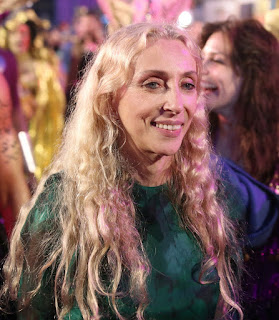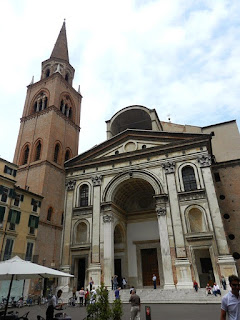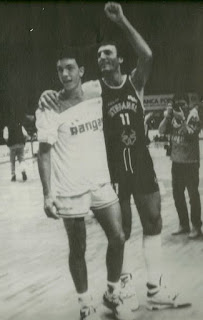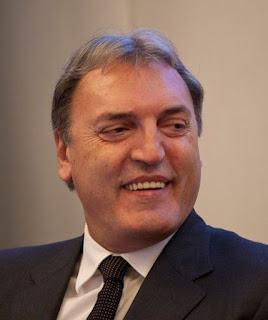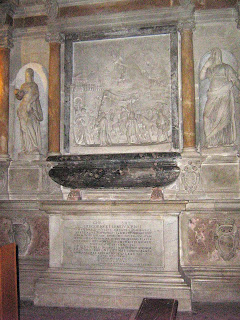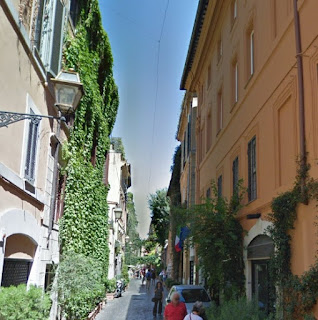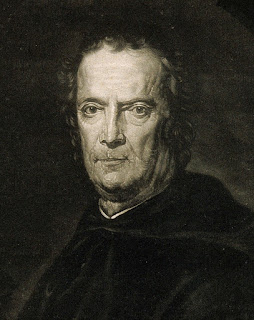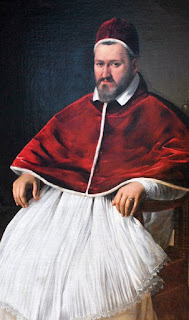Ex-beauty queen who avenged death of husband
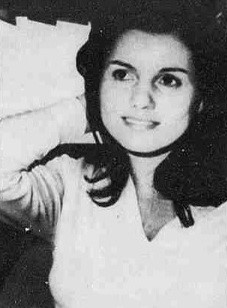 |
Assunta Maresca's good looks concealed
a ruthless, violent streak |
Assunta Maresca, the mobster’s wife who made headlines
around the world when she walked into a bar in Naples in broad daylight and shot
dead the man she suspected of ordering the murder of her husband, was born on this
day in 1935 in the coastal town of Castellammare di Stabia.
Better known as ‘Pupetta’ – the little doll – on account of
her small stature and stunning good looks, Maresca took the law into her own
hands after her husband – a young and ambitious camorrista and the father of
her unborn child - was assassinated on the orders of a rival.
Her extraordinary act brought her an 18-year prison sentence,
of which she served about a third, yet made her a figure of such public fascination
that several movies and TV series were made about her life.
She went on to become the lover of another mobster and was
alleged to have participated in Camorra activity herself, serving another jail
term after she was found guilty of abetting the murder of a forensic scientist,
which she denied.
Assunta Maresca was born into a world of crime. Her father, Alberto, was a smuggler specialising
in trafficking cigarettes; her uncle, Vincenzo, a Camorra boss who had served a
prison sentence for killing his own brother.
Her family were known as i Lampatielli, from the word ‘lampo’,
meaning lightning, for the speed at which they wielded a knife. Assunta had a
violent streak and was once arrested for seriously wounding a fellow pupil,
although she escaped conviction after her victim, on leaving hospital, withdrew
her complaint.
 |
Maresca on the day of her wedding to Pasquale Simonetti,
who would be dead within a matter of weeks |
At the age of 19 she entered and won a beauty pageant at
Rovigliano, a few kilometres along the Bay of Naples coast from Castellammare. It was not long after that when she caught
the eye of
Pasquale Simonetti, ostensibly a worker in the Naples fruit and
vegetable market but also a contraband cigarette dealer and the enforcer for a
Camorra cartel that fixed the prices of produce, controlled supply and selected
the buyers, often through violent coercion.
With the family’s blessing they were married at the Pontifical
Shrine of the Blessed Virgin of the Rosary of Pompei – the cathedral in the modern
town of Pompei, a short distance from the celebrated Roman ruins – in April
1955.
Pasquale, a big, broad man from Palma Campania, a village
about 25km (15 miles) from Naples on the other side of Mount Vesuvius, promised
to change his life for Assunta but did not have the chance. Ambitious enough to
be seen as a threat by other gang bosses, just three months after the wedding,
on July 16, he was killed by Gaetano Orlando, a hitman hired by gang boss Antonio
Esposito.
Heavily pregnant, a devastated Assunta soon discovered who
was responsible. She believed that the
police knew as well but, for one reason or another, chose not to make an
arrest. With her younger brother, Ciro, she travelled to San Giovanni in
Rotondo, some 230km (143 miles) away in Puglia, in order to plan her next move
well away from Esposito’s sphere of influence.
 |
Maresca believed family honour dictated
that she avenged her husband's death |
It was from there that she drove back to Naples a little
under three weeks later and arranged to meet Esposito in a bar on
Corso Novara,
a few steps from the city’s main railway station at Piazza Garibaldi. In her handbag was the Smith and Wesson revolver
Pasquale had handed to her on their wedding day in a symbolic gesture as he
pledged to reform his life.
As soon as Esposito identified himself she drew it, gripping
it in both hands as she pulled the trigger. Esposito fell to the floor and once
satisfied he was dead Assunta and Ciro left horrified customers to contemplate
what they had just seen.
She was arrested a couple of months later and detained in
the prison at Poggioreale, not far from the city’s Capodichino airport, where
she gave birth to her son, Pasquale Jnr.
It was four years before the case came to trial. The New York Times and Time magazine were
among a swathe of news organisations that covered the trial and crowds gathered
every day outside the courtroom in such numbers that the court decided to set up
microphones and speakers so that proceedings could be followed outside. There were factions, who called themselves
Pupettisti – those vocally supporting Pupetta – and Antipupettisti, who were against her.
Assunta argued that she acted
out of passion and self-defence, fearing she would also be killed. But the prosecuting magistrate argued
successfully that the killing was part of a wider gang war. Orlando was jailed
for 30 years for murdering Simonetti, Assunta received an 18-year sentence for
killing Esposito and her brother, Ciro, 12 years for his role in facilitating
Assunta’s crime.
The sentence for Assunta was reduced to 13 years and four
months on appeal, with Ciro acquitted altogether. Assunta, who became a leader
among her fellow female inmates in jail, was pardoned in 1965.
 |
Maresca (right) with the actress Manuela Arcuri, who
portrayed her in a 2013 TV drama |
She admitted later that the killing, although driven by
grief, was also a matter of honour. She planned to take over Pasquale’s
criminal activity and knew that to do so she would have to command respect,
which in the Camorra world meant being seen to avenge her husband’s murder personally.
On her release, she took advantage of her celebrity,
actually playing herself in a 1967 movie based on her life, and trading on her
glamorous notoriety by opening two fashion shops in Naples.
She took up with another mobster, Umberto Ammaturo, with
whom she had twins, Roberto and Antonella, although they never married.
The relationship survived despite the death in 1974 of
Pasquale Jnr, who was determined to be a worthy son to his late father by becoming
a significant figure in the Camorra. He
was killed in an ambush and Pupetta suspected her partner, who had been a rival
of her husband and always felt uneasy with Pasquale Jnr’s ambitions.
In time, though, they drifted apart and separated in 1982,
when Pupetta was jailed following the murder of Aldo Semerari, a corruptible psychiatrist,
criminologist and forensic scientist who had previously offered ‘helpful’
diagnoses on behalf of the Nuova Famiglia, the arm of the divided Camorra to
which Pupetta and Ammaturo were affiliated, but had jumped ship to keep rival
boss Raffaele Cutolo, head of the Nuova Camorra Organizzata, out of jail by
testifying that he was insane.
She was eventually released for lack of evidence but, on
suspicion of Camorra association, all her assets were seized. Nowadays, in her
80s, Pupetta has become a reclusive figure, reportedly dividing her time
between apartments in Castellammare and the resort of Sorrento, some 20km (12
miles) further along the bay.
The celebrated director Francesco Rosi made a film, La sfida, about her life in 1958 and she was the subject of a mini-series on TV as recently as 2013, when the producers were accused by some anti-Mafia campaigners of glamourising crime.
 |
Castellammare di Stabia's bandstand - the cassa armonica -
is a famous landmark in the resort |
Travel tip:
Much of Castellammare di Stabia, a resort about 30km (19 miles) from Naples that became a
major centre for shipbuilding on the Bay of Naples, was built over the Roman
city of Stabiae, which was destroyed along with Pompeii and other Roman towns
in the Vesuvius eruption of 79AD. Pliny
the Elder, the philosopher and naval and army commander of the early Roman empire,
is said to have died in the eruption. Once a bustling resort, it is famous for the ornate cast-iron and glass bandstand on the seafront, constructed originally in 1900 and restored in 1911.
 |
| The cathedral at Pompei, where Maresca was married in 1955 |
Travel tip:
The impressive Pontifical Shrine of the Blessed Virgin of
the Rosary of Pompei, the cathedral of the new Pompei in Campania, a town of
around 25,000 people about 25km (15 miles) south of Naples close to the ruins of
the former Roman city that attract millions of visitors every year, was built
from a dilapidated former church by Bartolo Longo, a lawyer who had returned to
the Christian faith after a period following alternative beliefs, over a
28-year period between 1873 and 1901. The statue of the Virgin of the Rosary
that sits atop the façade was carved from a single block of Carrara marble by
Gaetano Chiaromonte.





